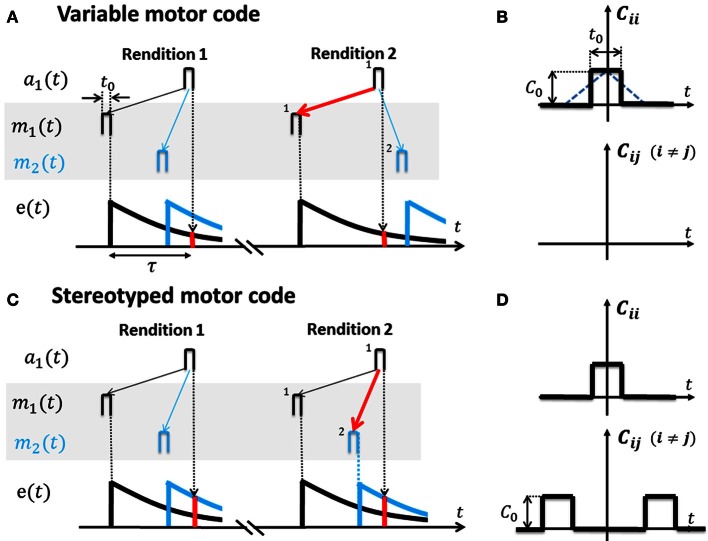Figure 3.
Cross-correlation functions for variable and stereotyped motor codes. (A) In a variable motor code m(t) (shaded area). Activity bursts m1 (black) and m2 (blue) of width t0 in two example motor neurons occur at diverse time lags relative to each other across renditions of the song motif. Auditory tuning in the shown sensory neuron is such that it responds a1 to bursts m1 after a time lag τ. Repeated co-activation m1 → a1 and non-zero eligibility e(τ) (red bar) at time lag τ leads to increased synaptic weight V11 (red arrow) and to a causal inverse. Lack of correlation between m2 and a1, as well as heterosynaptic competition, prevents V21 from similarly increasing (blue thin arrow). (B) The cross-correlation function Cij(t) for variable codes is flat except the auto-correlation peak at zero time lag (motor activity is uncorrelated among neuron pairs). Note: based on square activity pulses in motor neurons in (A) the true cross-correlation shape is triangular (blue dotted line) which we approximate by a square pulse of width t0 ≃ 10 ms. The auto-correlation peak height is C0. (C) In a stereotyped motor code m(t) (shaded area), bursts m1 (black) and m2 (blue) occur at a fixed time lag relative to each other across renditions of the song motif (traveling pulse of activity). Repeated co-activation m2 → a1 at higher eligibility (red bar) than the eligibility of m1 → a1 leads to strengthening of synapse V21 (red arrow) and to a predictive inverse. (D) The cross-correlation function Cij(t) for stereotyped codes peaks also at non-zero time lags.

